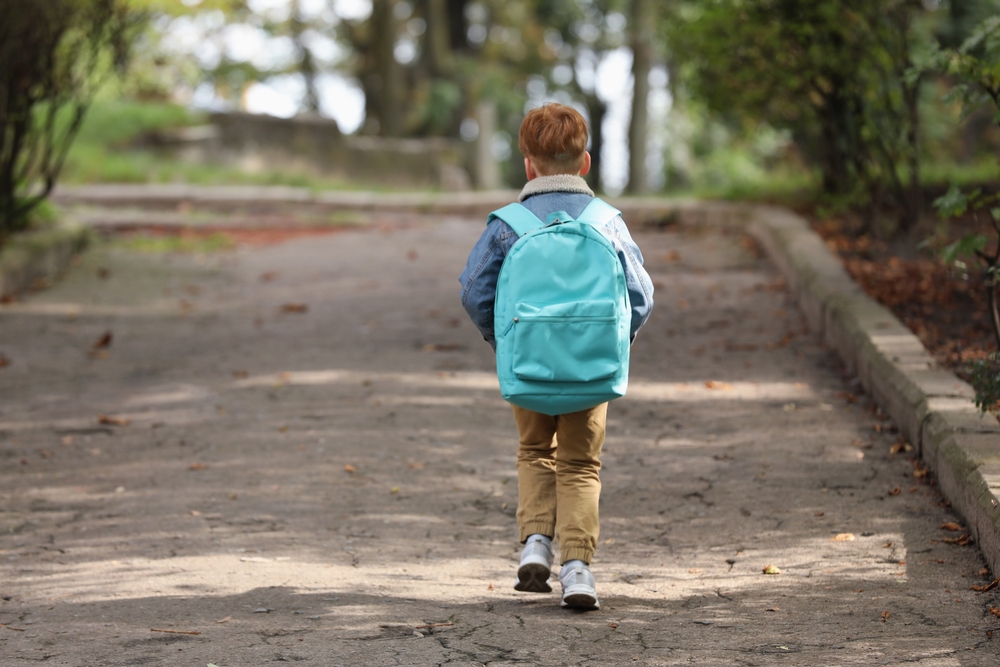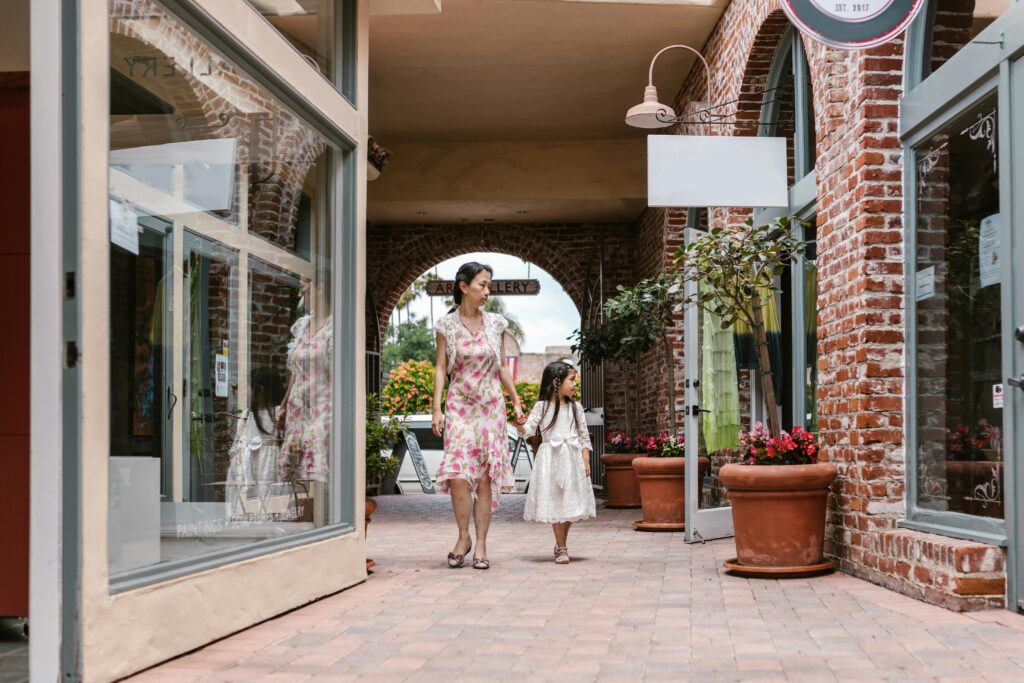Survey Finds More Than Half of Parents Are Having to Choose Between Groceries and School Supplies for Their Kids

When you were a kid, maybe back-to-school shopping meant the smell of freshly sharpened pencils, the thrill of a crisp new backpack, or the feeling that a clean notebook could hold a whole year of possibility.
For millions of parents today, that same season doesn’t smell like fresh pencils it smells like anxiety.
A recent survey reveals something no parent should have to say out loud: more than half are choosing between buying groceries and buying school supplies for their kids. That means deciding whether the fridge stays full or the backpack does. It’s a choice that doesn’t belong in any family’s life, yet it’s becoming the norm.
The price of a child’s education has stretched far beyond textbooks and paper. Tariffs, inflation, and shifting costs from schools to parents have turned a trip to the store into a financial minefield. Backpacks alone have jumped 30% in price since 2019. And for many, that’s just the beginning.
This isn’t just about money it’s about dignity, opportunity, and the quiet sacrifices parents make in the checkout line.
What the Surveys Reveal
Behind every shocking headline are numbers that tell the story in cold detail and this year’s back-to-school data is brimming with them.
According to Intuit Credit Karma, more than half of parents with school-aged children (54%) say they will cut back on groceries or other necessities just to afford school supplies. For nearly 4 in 10 parents (39%), affording those supplies at all feels out of reach. And 44% expect to take on debt credit cards, “buy now, pay later” loans, or other borrowing methods simply to get their kids through the classroom door prepared.
Generationally, the burden hits younger parents hardest. Sixty percent of Gen Z parents and 56% of millennials admit they’ll sacrifice essentials this season, compared to lower rates among older generations. The strain doesn’t stop at supplies: one-third expect to go into debt for after-school programs, sports, or clubs.

The price tags themselves have been steadily climbing. Between 2019 and 2025, the cost of some school essentials rose by 20%, with backpacks spiking 30%. Deloitte estimates parents will spend an average of $570 per child this year, while the National Retail Federation pegs it at $858.07. Multiply those figures by two or three children, and it’s clear why debt feels unavoidable for so many families.
And while inflation may not be rising as sharply as in recent years, other forces are at play. Tariffs on imported goods have kept prices stubbornly high, and schools themselves are shifting more costs like communal classroom supplies onto parents. In fact, 67% of parents say they feel a heavier financial load than in previous years, with some even responsible for purchasing items for the entire class.
These numbers strip away any illusion that this is just a “tight month” for families. They reveal a pattern: back-to-school season has quietly become one of the most financially demanding times of the year, second only to the holidays for many households. And while the figures are alarming, they’re only part of the story—the full picture comes into view when we look at what’s actually on the shopping list.
The True Scope of Back-to-School Costs

When we think of back-to-school shopping, it’s easy to picture a cart filled with notebooks, pencils, and glue sticks. But for most families, that list is only the tip of the iceberg.
The National Retail Federation and Deloitte both highlight a truth parents already know: clothing and accessories often outpace traditional supplies in cost. In fact, 41% to 44% of parents say these fashion items will be their biggest back-to-school expense driven in no small part by social media trends. Platforms like TikTok and Instagram have transformed “must-have” lists into status symbols, from designer water bottles to pricey sneakers and high-tech gadgets that aren’t strictly necessary for learning. Half of surveyed parents say their children request non-essential items they’ve seen online, and many admit they say “yes” to prevent their kids from feeling left out or singled out.
Then there’s technology. As classrooms increasingly integrate digital tools, laptops, tablets, and headphones are becoming standard requirements rather than optional extras. While some schools provide devices, others expect families to supply them an expense that can quickly climb into hundreds of dollars.
Beyond the shopping cart, extracurricular activities are another hidden cost. Sports, clubs, and after-school programs often vital for social development and academic engagement carry fees for uniforms, equipment, or participation itself. Nearly half of parents say they can’t afford these programs, and a third are willing to take on debt to cover them. For working parents, the loss of affordable after-school care can mean reducing work hours or leaving jobs entirely, compounding the financial strain.
Even food plays a role. Some parents count groceries as part of back-to-school expenses, stocking up on lunch items, snacks, and quick dinners to handle busier schedules. And for families already cutting back on essentials, this additional food cost can feel like one more weight added to the scale.
Sacrifices Parents Are Making

Behind every receipt and balance sheet is a family making trade-offs that most people never see. The surveys don’t just tally dollars they reveal the quiet, often invisible sacrifices parents are making to give their children a fair start.
More than half of parents (54%) say they will cut back on groceries or skip other basic necessities so their children can arrive at school prepared. For some, that means thinner meals or fewer fresh ingredients at home. For others, it means postponing bill payments or dipping into savings meant for emergencies, education, or even retirement.
Younger parents are often hit hardest. Six out of ten Gen Z parents and over half of millennials report sacrificing essentials this season. Many are already stretched thin from summer childcare costs, leaving them little financial buffer when August arrives.
The sacrifices don’t end with money. Some parents say they’ve given up dining out, vacations, or even living in neighborhoods they’d prefer, all to redirect resources toward their children’s education. In certain cases, they’ve taken on extra shifts, side jobs, or reduced personal spending to almost nothing.
Debt is another quiet trade-off one with lasting consequences. About 44% of parents expect to rely on credit cards or “buy now, pay later” services to cover school expenses. A portion are willing to take on $1,000 or more in debt, knowing it may take months, if not longer, to pay off. And for those who do this year after year, the financial hole deepens.
Beyond finances, there’s the emotional weight. Parents report feeling guilt when they can’t afford the exact items on a supply list, or when they must say “no” to a child’s request for something that would help them fit in socially. Some quietly absorb the sting of being unable to cover extracurricular activities or technology that could benefit their child academically, knowing those gaps may limit opportunities.
Creative Survival Strategies

When necessity tightens its grip, creativity often steps in. Parents facing steep back-to-school costs aren’t simply resigning themselves to debt they’re finding inventive, sometimes unconventional ways to stretch every dollar without shortchanging their children’s needs.
Hunting for Deals Early and Often
Many families have turned the shopping calendar into a strategy. Sales events like Amazon Prime Day, summer clearance racks, and early-bird back-to-school promotions have become critical lifelines. This year, more than half of parents said they planned their shopping around such events to lock in savings before potential price hikes, especially with tariffs threatening to push costs even higher.
Making the Most of Secondhand and Shared Resources
From hand-me-down clothing to gently used electronics, secondhand shopping is no longer a last resort it’s a deliberate choice. Parents are frequenting thrift stores, online resale platforms, and community swap events to find quality items at a fraction of retail cost. Some are pooling resources with friends or neighbors whose children are in the same grade, buying in bulk and splitting costs on school staples.

Comparison Shopping and Brand Flexibility
The loyalty many shoppers once had to brand names is giving way to practicality. Surveys show that 75% of parents are willing to switch brands if their preferred option is too expensive, and 65% are favoring budget-friendly retailers over traditional favorites. For big-ticket items like laptops or tablets, parents are using price-tracking apps and coupon extensions to spot deals and cashback offers.
Repurposing and Prioritizing
Families are combing through closets and storage bins before setting foot in a store, reusing last year’s supplies where possible. Some parents are waiting to purchase seasonal clothing like jackets or boots until it’s truly needed, spreading out the financial hit over several months. Others are drawing a firm line between “needs” and “wants,” sometimes encouraging older children to earn money for non-essential items.
Turning Shopping Into a Lesson
Several financial experts recommend and parents are practicing turning this season into an opportunity to teach children about budgeting and prioritizing. Having an age-appropriate conversation about costs, limits, and trade-offs can help kids understand the difference between necessities and luxuries. This not only manages expectations but also plants seeds for healthy financial habits later in life.
Why This Problem Exists

The sacrifices and resourcefulness of parents don’t exist in a vacuum they’re symptoms of deeper, structural problems that have been building for years. Back-to-school shopping has become a high-stakes season not because parents are less careful with money, but because the economic playing field has shifted beneath their feet.
Rising Costs Outpacing Wages
Even though overall inflation has slowed, the cost of many school-related items continues to climb. Between 2019 and 2025, school supply prices rose by about 20%, with backpacks up 30%. Yet household incomes for many families have not kept pace. The gap between what parents earn and what basic education preparation costs is widening.
Shifting Financial Burdens from Schools to Parents
Many parents report that schools now expect them to provide not only individual supplies for their children but also communal items for the entire class cleaning products, paper, art supplies. Sixty-seven percent say the financial load on families is heavier than in past years. Budget cuts and resource gaps within school systems mean costs once covered by districts are now passed directly to households.
The Ripple Effect of Global Trade and Policy
Tariffs on imported goods especially those affecting consumer products have helped keep prices high. Even with some tariff increases paused temporarily, uncertainty has driven both retailers and shoppers to adjust purchasing patterns. Experts warn that once these measures fully take effect, the sticker shock could be even greater.
The Social Pressures of “Fitting In”
Beyond economics, there’s a cultural layer. Social media trends, peer influence, and marketing create a constant push for children to have certain branded clothing, accessories, or tech. Many parents fearing their child will be excluded or teased stretch budgets to meet these expectations, even when the items aren’t strictly necessary for learning.
Wider Economic Strain on Households
Back-to-school season doesn’t exist in isolation. Families often arrive at August already depleted from summer childcare expenses, rising housing costs, and year-round increases in groceries and utilities. This makes the sudden, concentrated expense of school shopping feel even heavier, pushing more families toward debt.
Turning the Page Together
The numbers are sobering. The stories are heavy. But awareness without action is just sympathy in neutral.
Every year, parents across the country are pulling double shifts, skipping meals, and taking on debt so their kids can show up at school with the tools to succeed. And while those sacrifices speak volumes about love and commitment, they also signal something urgent: we can’t keep treating this as an individual problem to be solved only at the kitchen table.
Change begins in two places our homes and our communities. At home, it’s about having honest, age-appropriate conversations with our kids about needs versus wants, the value of money, and the meaning of gratitude. In our communities, it’s about showing up for one another: contributing to local school supply drives, sharing hand-me-downs, volunteering for fundraisers, and advocating for policies that ease this burden for families.
And beyond that, it’s about raising our voices. Asking school boards, local governments, and even national leaders to address the growing gap between what’s expected of parents and what they can realistically afford. Pushing for funding that keeps basic supplies in classrooms, so teachers aren’t footing the bill and parents aren’t going without groceries.
A child’s education should never come at the cost of a parent’s dignity, health, or ability to feed their family. If we want the next generation to thrive, we have to build systems and communities that make it possible.
Because at the end of the day, back-to-school season should smell like fresh pencils and new beginnings, not anxiety and overdue bills. And that’s something we all have the power to change.
Loading...

